Child Car Seats
Safety is always of paramount importance in family cars, but the majority of safety systems in modern vehicles are built with adult passengers in mind.
Thankfully, laws and design standards are in place to ensure that booster and child seats provide a safe ride for little passengers.
This section covers everything you need to know about safe child seating, including:
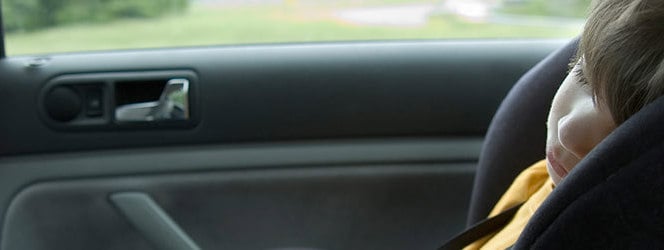
Generally, children must use the correct car seat for their weight (rather than age or height) until they reach 135cm tall (4'5") or 12 years old (whichever comes first). When carrying children as passengers in a vehicle, there are a few things to bear in mind, whatever their weight or age:
- A child must never be carried on your lap
- A single seatbelt should never be used for two passengers
- A child must sit in a car seat until they are 12 years old or 4'5" tall, depending on which comes first
- The seat can be front-facing if the child is older than 15 months. The seat must be rear-facing if the child is younger than 15 months
- If the child weighs less than 9kg, they should travel in a baby carrier rather than a child seat
- Any seat used must be EU approved (look for a label showing a capital 'E' in a circle)
- Secondhand child seats must meet safety standards, and the buyer should check that it hasn't previously been involved in a crash
- Child car seats must not be used in side-facing seats
- A child can sit in a backless booster seat once they are over 4'1" tall and weigh over 22kg
- Exceptions are made with emergency journeys of a short distance with a child over the age of three or when travelling in a minibus, minicab, tax, coach or van (but not in the front) and for journeys where a third child's seat simply won't fit in the back of a car with two others and the child is aged over three.
Exceptions are made with emergency journeys of a short distance with a child over the age of three or when travelling in a minibus, minicab, taxi, coach or van (but not in the front) and for journeys where a third child's seat simply won't fit in the back of a car with two others and the child is aged over three.
Baby car seat safety in particular is of paramount importance and a topic that we explore in further detail in the types of child car seat section.
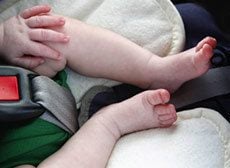
What is the penalty for not using a car seat?
As with seatbelt legislation, it is a legal requirement that children are using the appropriate child seat for their weight, age or height. Not using a car seat is incredibly irresponsible and puts children’s lives in danger. As with seatbelt legislation, it is a legal requirement that children use the appropriate child seat for their weight, age or height. Not using a car seat is incredibly irresponsible and endangers children's lives. Failure to ensure a child passenger is using an appropriate restraint could land you a fine of up to £500. There are other implications, too: any claims against your motor insurance could be affected, and you may also face civil proceedings if you fail to carry someone else's child safely.
“Children must ride in a seat that is appropriate for their size until they reach 135 cm in height (150 cm in ROI) or until they turn 12 years old, whichever comes first, according to car seat regulations.”

Who is responsible?
The vehicle's driver is legally responsible for ensuring that all child passengers wear their seatbelts and use the appropriate seat or child restraint.
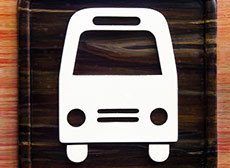
When don’t you need to use a child’s car seat?
If a child is exempt on medical grounds, they do not have to use a child restraint. However, if your child has a disability, they may need to use a seatbelt or child restraint designed explicitly for their needs. Your doctor will be able to provide more information.
Other instances where children don’t need to travel with a car seat include:
- In a licensed taxi, minicab or minibus, children under three years old can travel in the vehicle's rear seats without a child restraint or seatbelt. Children three years old or older must wear an adult seatbelt
- If the correct child restraint isn't available, a child over three years old can use an adult seatbelt for an unexpected but necessary short journey
If there is no room for three child seats in the back, a child over three can sit in the back using an adult belt or in the front with the correct child seat. A child under the age of three cannot travel unless they sit in the front with the correct child restraint.
For more information about the legalities of using a child car seat, visit Gov.uk
Basic rules for using child car seats
- If you’re using a rear-facing seat in the front, deactivate any front-facing airbags. Be aware that some cars do not allow airbags to be deactivated
- Check the seat is secure and won't wiggle around
- Ensure the seat buckle is outside the frame, otherwise, it could open in an accident
- If you’re fitting a seat for a baby, ensure the harness is pulled tight with a maximum of two fingers’ room between their collar-bones and the shoulder straps.
- Check the harness buckle is as low as possible - ideally across the child's pelvis rather than their stomach
- Make sure everything is adjusted in line with the seat's instructions
- Make sure that the seat is EU-approved (i.e. marked with a capital 'E' in a circle)
- Ensure that the right car seat size is used for the child. See below for our guide to see all seat options for ages
- If the seat is old or second-hand, ensure that the car seat is sturdy and not damaged in any way that could lead to it not doing the job that it is there to do (i.e. protect the child)
- Do not use a child car seat in side-facing seats
“Failure to ensure that a child passenger is using an appropriate child restraint can lead to a fine of up to £500.”

The different types of child car seats and their uses are as follows:
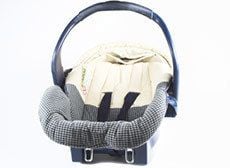
Rear-facing baby seats
Used for babies up to 13kg

Forward or rear-facing baby seats
Used for children from 9kg-18kg
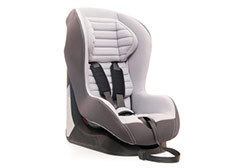
Booster seats (alternatively known as forward-facing child car seats)
Used for children from 15kg-25kg
Adjustable car seats
Some manufacturers offer adjustable car seats that are designed to be adapted as a child grows. Ensure you use the appropriate setup for your child's weight by following the instructions or checking the label.
Integrated child-sized seats
Some vehicles are fitted with integrated child-sized seats. If the seat is EU-approved, you don't need an additional child restraint, providing the child is of the correct weight (check the label or car handbook for confirmation).
If the integrated seat is not EU-approved, you'll need to use a separate child seat. Gov.uk offers more information about the suitability of different types of car seats.
Impact shield technology car seats
One of the most recent safety innovations is impact shield technology, which is being put into an increasing number of car seats.
Impact shields, also known as safety cushions, are affixed to the front of your child's car seat. They function similarly to an airbag that has already been inflated and aids in dispersing collision forces across a wider area. This lessens the strain on vital body parts and helps protect your child in an accident.
When a rear-facing seat cannot be used, car seats with impact shield technology are especially great since they offer an additional layer of safety.
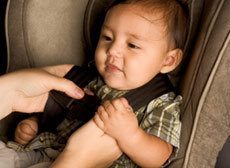
Any child restraint you purchase should come with comprehensive fitting instructions. A poorly fitted car seat will not work effectively and may even endanger your child's life. A few things to check include the following:
- The seatbelt feeds through the holes in the child restraint without obstructions (applicable only for seats secured using an adult seatbelt)
- There is enough space for your child to stretch their legs
- There is minimal sideways or forward movement of the seat
- Only the seatbelt – not the buckle – is touching the car seat (applicable only for seats secured using an adult seatbelt)
- Any rear-facing child car seats are not in front of an active airbag
- There is nothing between the bottom of the child restraint and the actual car seat
- The adult seatbelt fits properly across your child when the seat is fitted, for example, it doesn't sit under the child's arm, too close to their neck, and isn't twisted or too loose (applicable only for seats secured using an adult seatbelt)
You can also check out this great video from Mother&Baby:
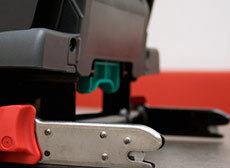
ISOFIX car seat fittings
The rear seats of most new cars produced since 2013 are fitted with universal ISOFIX fixtures. This makes securely fitting compatible car seats quick and simple, as you can easily attach the seat at two or three mounting points. Most vehicles have two ISOFIX points at the base of the seat, but some are also fitted with a third at the top for additional security.
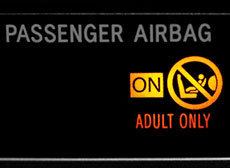
Using a child’s car seat in the front seat
A child car seat can be used in a vehicle's front seat if it fits properly. However, it is essential to remember that any frontal airbags in your vehicle must be deactivated before fitting a rear-facing baby seat.
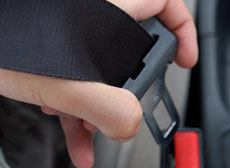
Using car seats with seatbelts
The majority of children's car seats can only be used with a belt that has a diagonal strap and a lap belt (a three-point belt). However, if you have an EU-approved child restraint compatible with a lap belt, this is permitted by law. If your vehicle doesn't have seatbelts (for example, it's a classic car), a child over three years old can travel in the back without their car seat. Children under three must not travel in cars, vans or goods vehicles without a seatbelt or appropriate child restraint.
While it’s crucial for children to be in car seats for most travel scenarios, there are specific situations where a car seat is not necessary:
- Short, unexpected journeys: If an appropriate child restraint is not available, children over three years old can use an adult seatbelt for an unplanned but necessary short trip. However, this should not be a regular practice.
- Taxis and public hire vehicles: In licensed taxis, minicabs, or minibuses, children under three years old can travel without a car seat or seatbelt in the rear seats. Children three years old or older must use an adult seatbelt in these vehicles.
- Vehicles without seatbelts: In vehicles that are not equipped with seatbelts, such as some classic cars or specific types of vans and goods vehicles, a child over three years old can travel in the back without a car seat. It's essential to ensure that the travel is safe and compliant with the law.
- Medical exemptions: If a child has a specific medical condition or disability that prevents the use of a standard car seat, they may be exempt from using one. A doctor can provide documentation to support this exemption.
- Three children, not enough space: If there isn't enough room to fit three child seats in the back of the vehicle, a child over three years old can either use an adult belt in the back or, if necessary, can sit in the front seat with the correct child seat.
Understanding these exceptions helps ensure that each travel situation is handled safely and legally, always prioritizing the child's safety. For more detailed guidelines, it's recommended to check the latest information on the Gov.uk website or consult with vehicle safety experts.
Find this guide useful? Nationwide Vehicle Contracts provide a range of guides on UK Road Law, such as Seatbelt Law and Motorway Laws.
We are also one of the UK's largest car leasing brokers, offering various leasing deals as well as in stock lease cars, which usually come with a delivery time of three to four weeks (times may vary).
Guide Information
Originally published: 25th September 2015
Last updated: 23rd December 2022
